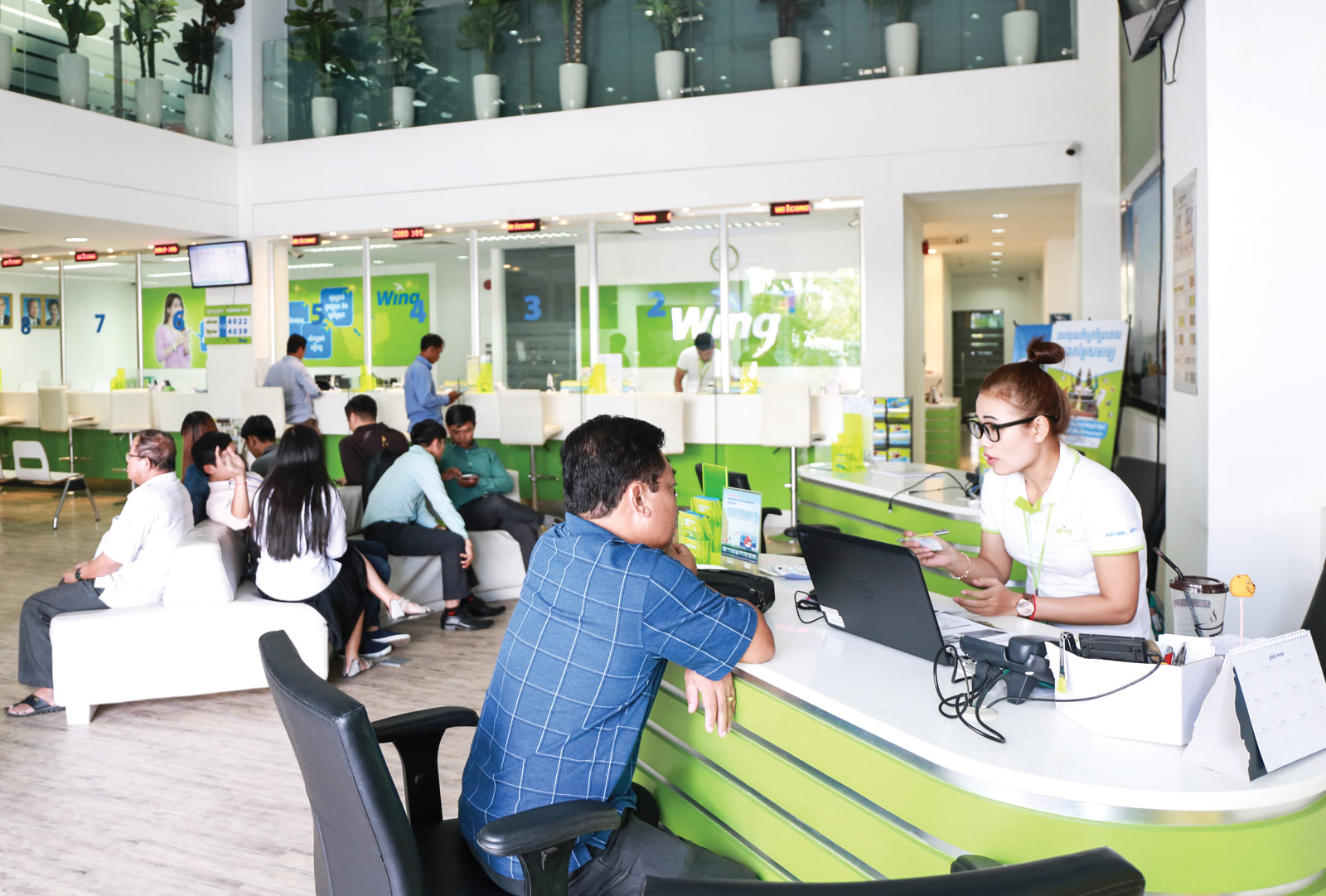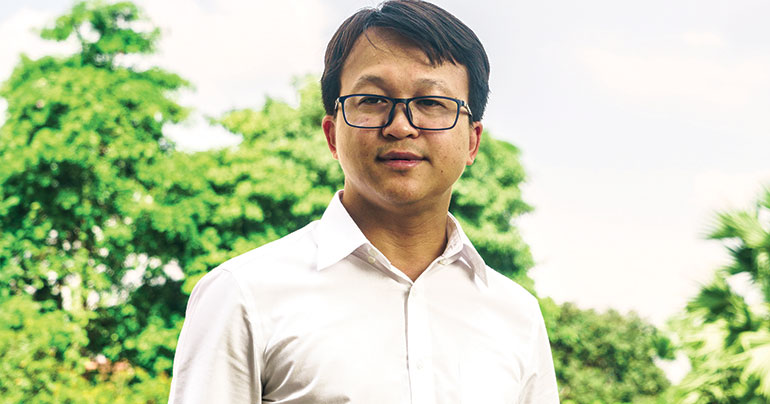Taxi, tuk tuk and moto drivers making their way from Cambodia’s capital to its rural provinces were substitutes for banking for many of the country’s migrant workers as recently as a decade ago. Garment workers in Phnom Penh sending $20 home to their families would pay a premium of 10% for their money to be delivered by road, slicing away at their already meagre minimum monthly income of $50.
With more than 47% of the country’s population living below the poverty line in 2007, the cost of financial exclusion was high. Sending money home and paying bills had to take place via these costly informal processes, while saving money meant stashing it at home, leaving people vulnerable to theft.
“Financial inclusion – more people entering the financial system – it’s… a fundamental right,” said Stephen Higgins, a managing partner at Phnom Penh-based investment and advisory firm Mekong Strategic Partners.
In recent years, a notable portion of the country’s population of 16 million people has been granted that right – it’s now a matter of making the most of it.
One of the most significant steps toward expanding financial inclusion came in 2009 in the form of low-cost money transfers with Wing Cambodia, according to Higgins. For a small fee and without a Wing membership, a one-time code would be given to the person transferring funds; throughout the country, the same code could be used to claim the money. Road-based money delivery became largely irrelevant.
“A big thing around Wing was making money a lot easier for people to manage, to move, to deal with. It brought a lot more people into the financial system,” said Higgins. “They don’t have a bank account and most don’t even have a Wing account, but they can use the financial system.”

The next step was spearheaded by microfinance growth. Within a few years of Wing’s launch, the uptake of deposit bank accounts also began to increase significantly. Between microfinance institutions and leading local banks Acleda and Sathapana, which are heavily active in microfinance banking, the number of accounts shot up from roughly 1.7 million in 2012 to 4.1 million last year. Deposits to accounts at Cambodian Microfinance Association (CMA) member institutions hovered at 167,000 in 2008, compared to roughly two million deposits last year. With the inclusion of Acleda and Sathapana, the number hits 5.9 million deposits.
“From a macroeconomic perspective, this can only be a positive in my view,” said Miguel Chanco, lead Asean analyst at the Economist Intelligence Unit. “The more Cambodians use formal financial institutions to save, the easier it is for those savings to find their way to productive investments in the economy as banks will have greater capacity to lend.”
By 2016, the National Bank of Cambodia (NBC) estimated that 71% of the country’s population had access to financial services, with 59% using formal banking systems. That same year, the World Bank promoted Cambodia from the low-income bracket to lower middle-income country status.
“A big thing around Wing was making money a lot easier for people to manage, to move, to deal with. It brought a lot more people into the financial system”
“Compared to ten years ago, there are a lot of changes,” said Chan Sophal, an economist and director of the Centre for Policy Studies. “There are more banks, more people who have accounts… So there are long queues at banks.”
To Yun Sovanna, CMA’s general secretary, the growth in deposits and accounts means microfinance loans can be supported by local deposits rather than international loans to microfinance institutions. This could cut the cost of processing fees and potential taxes from offshore borrowing. It also supports the continued growth and outreach of these banking institutions, he says.
But as the economy and technology advance, financial processes must do the same in order for financial inclusion to remain beneficial or worthwhile.
“One area policymakers can start to focus on in the years ahead is to make it easier for Cambodians to use their formal savings accounts to pay for essential public services, to file taxes and to receive benefits,” Chanco said. Substitutions for roadside delivery and Wing transfers have still not been fully realised by the banking sector, with the NBC recording 451,000 registered Wing customers in 2016 and 10.2 million walk-in customers. “More broadly, the next step for the country’s financial sector at large is to move to a system less dependent on cash and informal sources of lending,” Chanco added.

Continued pursuit of those on the fringes of the financial sector is also important, Higgins said – but he conceded that reaching this largely rural population could require their migration towards commercial hubs.
“Those rural people will always be hard to reach and hard to bring in, so as they migrate to the cities, you’ll just see a natural uplift in financial inclusion,” said Higgins. Even with migration, though, a technological solution to cut the costs of inclusion will be a necessary future step, he added.
The system he envisions is a digital platform or app that requires fewer human resources, which would lower the cost of setting up an account so that people with only $10 to deposit aren’t seen as a financial liability, for example. Currently, according to Higgins, to open an account “you’ve got to do all these checks to verify that you are who you say you are, and for a lot of people on the lower socio-economic scale, they don’t have the right records [and documents]”. A tech-based solution such as that advocated by Higgins would require a low spending cap that depletes the likelihood of money laundering so that fewer documents would be required.
Even as financial inclusion continues to blossom in Cambodia and the country looks for the remaining 29% of its population to join in, responsible participation rather than access itself should be the aim, said Sophal, pointing to safe loan procedures as an example.
“I think in terms of financial inclusion, this is about responsible lending and finance borrowing. People need to be more financially literate to understand a loan and how to use it,” he said. “But the lenders should understand better too.”


